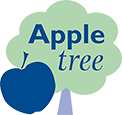What is the difference between Web 1.0, 2.0 and 3.0?
For those who are still confused by my title, Web 1.0, 2.0 and 3.0 are the various stages the internet has evolved, and how it has affected electronic, email, online or digital marketing (the various terms for marketing on the internet also suggests how technology and its concepts have rapidly changed).
Web 1.0 deals with static websites. These were originally set up to be online brochures, a representative of your business on the internet where people could go to find information.
A space was provided on the web which was filled with an attractive (if applicable) website that hardly changed since its conception, except for a few additional alterations and updates, sparsely accomplished due to cost and reliance on webmasters. The concept was simple, and at first confined to those who could afford it or had access to it.
Web 2.0 deals with interaction. Now there are all sorts of websites that allow their visitors to add their own contributions, that are regularly updated with new information, encourage participation, call to action and regular methods of following or subscribing.
This concept of interaction has been spread to social networking and sharing sites, a phenomenon that has expanded hugely to become almost a part of our daily lives, a requirement to be constantly up-to-dated with what’s going on, become a trend setter or act as an innovator to start off the next big thing.
Then there is the ability to update your website through CMS (content management systems), in whatever format it is in (website, blog, blogsite, forum, status update or whatever), by yourself whenever and wherever you like (on any suitable hardware, software or media), and also by others through leaving comments, feedback, contributions and advice.
Web 3.0 is no longer a concept of the future, it is already here. The use of smart and android phones have commanded a change in internet use. It’s not just that websites have to adapt to be effectively seen on people’s mobiles, but the technology behind them as regards data gathering, customer segmentation and promotional targeting.
Data about consumers are gathered from a myriad of sources: mobile use, payment cards, loyalty cards, telephone voting systems for popular television participation shows, the list is endless. Today’s technology allows marketers much easier access to all sorts of information that would have taken ages and with much higher costs than before.
This is mostly permission based (a requisite much more heavily policed in the States), but unfortunately subjected to technically advanced fraudsters and spammers. Even so, marketers have to find new ways of promoting their products to overcome apathy and avoidance of regular advertising, and technology provides constant answers to beat the increasingly rapid changes of today’s society as it adapts to whatever is thrown at it!





